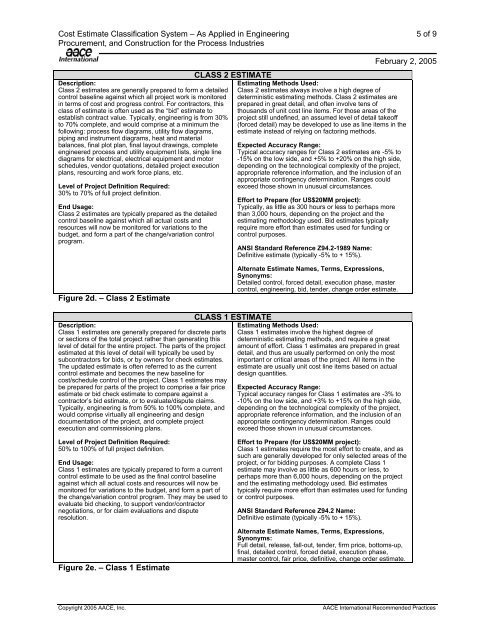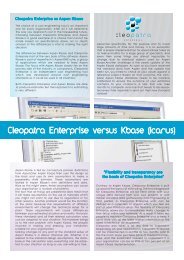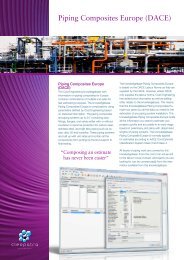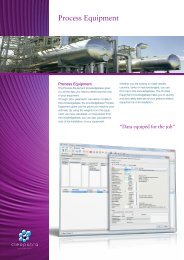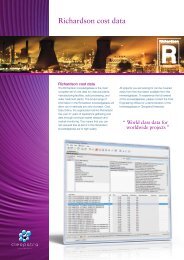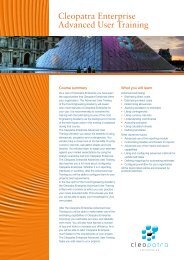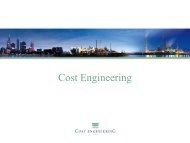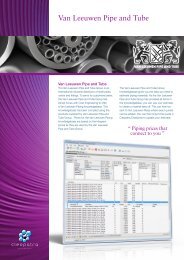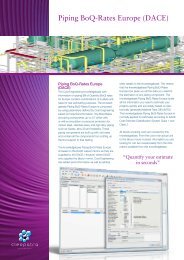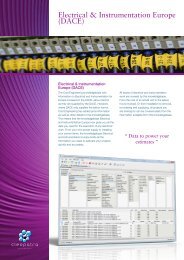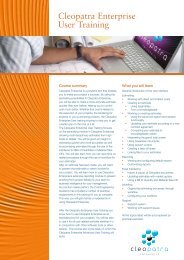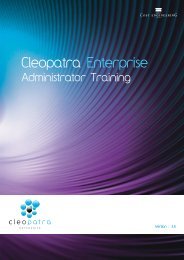18R-97: Cost Estimate Classification System - Kenai Peninsula ...
18R-97: Cost Estimate Classification System - Kenai Peninsula ...
18R-97: Cost Estimate Classification System - Kenai Peninsula ...
- No tags were found...
You also want an ePaper? Increase the reach of your titles
YUMPU automatically turns print PDFs into web optimized ePapers that Google loves.
<strong>Cost</strong> <strong>Estimate</strong> <strong>Classification</strong> <strong>System</strong> – As Applied in EngineeringProcurement, and Construction for the Process Industries5 of 9Description:Class 2 estimates are generally prepared to form a detailedcontrol baseline against which all project work is monitoredin terms of cost and progress control. For contractors, thisclass of estimate is often used as the “bid” estimate toestablish contract value. Typically, engineering is from 30%to 70% complete, and would comprise at a minimum thefollowing: process flow diagrams, utility flow diagrams,piping and instrument diagrams, heat and materialbalances, final plot plan, final layout drawings, completeengineered process and utility equipment lists, single linediagrams for electrical, electrical equipment and motorschedules, vendor quotations, detailed project executionplans, resourcing and work force plans, etc.Level of Project Definition Required:30% to 70% of full project definition.End Usage:Class 2 estimates are typically prepared as the detailedcontrol baseline against which all actual costs andresources will now be monitored for variations to thebudget, and form a part of the change/variation controlprogram.CLASS 2 ESTIMATEFebruary 2, 2005Estimating Methods Used:Class 2 estimates always involve a high degree ofdeterministic estimating methods. Class 2 estimates areprepared in great detail, and often involve tens ofthousands of unit cost line items. For those areas of theproject still undefined, an assumed level of detail takeoff(forced detail) may be developed to use as line items in theestimate instead of relying on factoring methods.Expected Accuracy Range:Typical accuracy ranges for Class 2 estimates are -5% to-15% on the low side, and +5% to +20% on the high side,depending on the technological complexity of the project,appropriate reference information, and the inclusion of anappropriate contingency determination. Ranges couldexceed those shown in unusual circumstances.Effort to Prepare (for US$20MM project):Typically, as little as 300 hours or less to perhaps morethan 3,000 hours, depending on the project and theestimating methodology used. Bid estimates typicallyrequire more effort than estimates used for funding orcontrol purposes.ANSI Standard Reference Z94.2-1989 Name:Definitive estimate (typically -5% to + 15%).Figure 2d. – Class 2 <strong>Estimate</strong>Alternate <strong>Estimate</strong> Names, Terms, Expressions,Synonyms:Detailed control, forced detail, execution phase, mastercontrol, engineering, bid, tender, change order estimate.Description:Class 1 estimates are generally prepared for discrete partsor sections of the total project rather than generating thislevel of detail for the entire project. The parts of the projectestimated at this level of detail will typically be used bysubcontractors for bids, or by owners for check estimates.The updated estimate is often referred to as the currentcontrol estimate and becomes the new baseline forcost/schedule control of the project. Class 1 estimates maybe prepared for parts of the project to comprise a fair priceestimate or bid check estimate to compare against acontractor’s bid estimate, or to evaluate/dispute claims.Typically, engineering is from 50% to 100% complete, andwould comprise virtually all engineering and designdocumentation of the project, and complete projectexecution and commissioning plans.CLASS 1 ESTIMATEEstimating Methods Used:Class 1 estimates involve the highest degree ofdeterministic estimating methods, and require a greatamount of effort. Class 1 estimates are prepared in greatdetail, and thus are usually performed on only the mostimportant or critical areas of the project. All items in theestimate are usually unit cost line items based on actualdesign quantities.Expected Accuracy Range:Typical accuracy ranges for Class 1 estimates are -3% to-10% on the low side, and +3% to +15% on the high side,depending on the technological complexity of the project,appropriate reference information, and the inclusion of anappropriate contingency determination. Ranges couldexceed those shown in unusual circumstances.Level of Project Definition Required:50% to 100% of full project definition.End Usage:Class 1 estimates are typically prepared to form a currentcontrol estimate to be used as the final control baselineagainst which all actual costs and resources will now bemonitored for variations to the budget, and form a part ofthe change/variation control program. They may be used toevaluate bid checking, to support vendor/contractornegotiations, or for claim evaluations and disputeresolution.Figure 2e. – Class 1 <strong>Estimate</strong>Effort to Prepare (for US$20MM project):Class 1 estimates require the most effort to create, and assuch are generally developed for only selected areas of theproject, or for bidding purposes. A complete Class 1estimate may involve as little as 600 hours or less, toperhaps more than 6,000 hours, depending on the projectand the estimating methodology used. Bid estimatestypically require more effort than estimates used for fundingor control purposes.ANSI Standard Reference Z94.2 Name:Definitive estimate (typically -5% to + 15%).Alternate <strong>Estimate</strong> Names, Terms, Expressions,Synonyms:Full detail, release, fall-out, tender, firm price, bottoms-up,final, detailed control, forced detail, execution phase,master control, fair price, definitive, change order estimate.Copyright 2005 AACE, Inc.AACE International Recommended Practices


